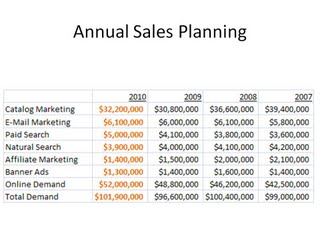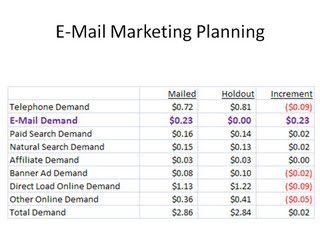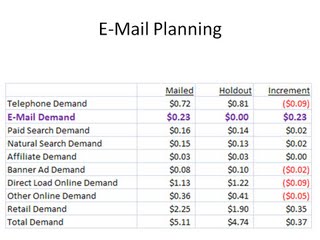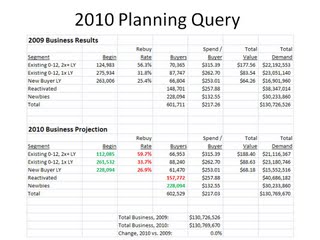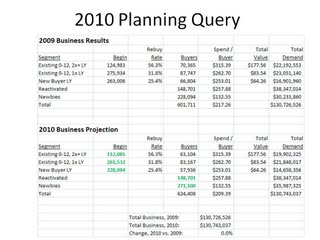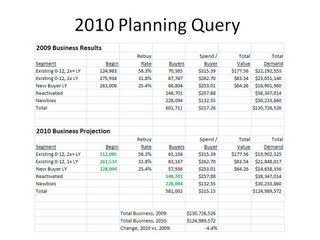Planning: Forecast Accuracy
Ok, you've finally submitted your Annual Sales Plan for 2010. Now what?
It's time for forecast accuracy!
In e-commerce activities, I like to evaluate forecast accuracy on a monthly basis. In other words, each of your primary e-commerce micro-channels are evaluated against their forecast each month. You sum all Affiliate demand, and compare it against your forecast. You record the absolute value of your forecast error (-8% and +8% are both reset to 8%).
Repeat this process for all micro-channels (e-mail, paid search, natural search, each catalog you mailed last month). Calculate the absolute average forecast error (8%, 3%, 20%, 4%, 1% = 7.2%).
Your absolute average forecast error should be less than 8%. This is the number you evaluate your forecasting experts against. Each month, your absolute average forecast error should be less than 8%.
Now, here's the good part! After the first month is in the books, you are allowed to adjust your forecasts by advertising micro-channel. In other words, if e-mail marketing exceeded plan by 15%, and you have reason to believe that e-mail marketing will perform at 15% above forecast/plan for the rest of the year, go ahead and adjust your forecast. In subsequent months, you compare your forecasts to the revised forecast.
You'll find that your inventory team and your finance team will LOVE you if you get this part of the job done right!
In fact, you'll become THE person the company looks to, when wanting to know "what the future holds".
This is the best way, in my experience, for a garden variety analyst to gain Executive exposure. Simply own the forecast for where your business is heading, and you'll become an integral part of your Executive team, without having to deal with the pressures of being a real-life Executive.
Labels: Planning
